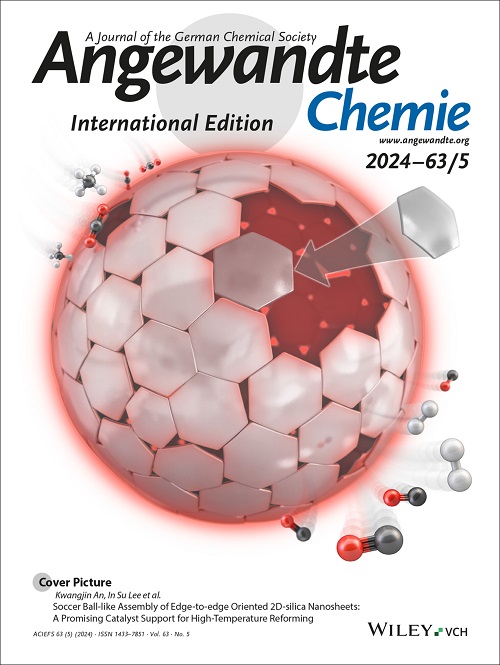EDTA‐Mg Nano‐Chelators Amplify Ferroptosis by Artificially Simulating the Epithelial‐Mesenchymal Transition Process and Endogenous Iron Deprivation
IF 16.1
1区 化学
Q1 CHEMISTRY, MULTIDISCIPLINARY
引用次数: 0
Abstract
Epithelial‐mesenchymal transition (EMT) is a key step in initiating tumor metastasis. Commonly, researchers focus on inhibiting EMT to prevent tumor metastasis. However, they ignore that tumor cells undergoing EMT are more vulnerable to disturbance from the external environment. Tumor cells in this period are a potential therapeutic target, yet precisely regulating the EMT of tumor cells remains a challenging problem to be solved. Here, based on metal chelation therapy, we propose a strategy of artificially mimicking EMT, integrating ferroptosis and immunotherapy to inhibit tumor growth and metastasis. The prepared ethylene diamine tetraacetic acid‐magnesium (EDTA‐Mg), on the one hand, chelates Ca2+ on the surface of tumor cells to form EDTA‐Ca, causing the dissociation of tumor cells. Meanwhile, E‐cadherin is downregulated, while vimentin and matrix metalloproteinase 2 (MMP‐2) are upregulated, indicating the occurrence of EMT. On the other hand, after EDTA‐Ca is endocytosed by tumor cells, it deprives Fe in the lysosomes to form EDTA‐Fe, which induces ferroptosis through a Fenton reaction. Ferroptosis, combined with the initially released Mg2+, synergistically amplifies the immune response, thereby inhibiting tumor metastasis. To the best of our knowledge, such a strategy of artificially simulating EMT for tumor treatment has hitherto not been reported.EDTA - Mg纳米螯合剂通过人工模拟上皮-间充质过渡过程和内源性铁剥夺放大铁凋亡
上皮-间充质转化(Epithelial - mesenchymal transition, EMT)是引发肿瘤转移的关键步骤。通常,研究人员关注的是抑制EMT以防止肿瘤转移。然而,他们忽略了接受EMT的肿瘤细胞更容易受到外界环境的干扰。这一时期的肿瘤细胞是一个潜在的治疗靶点,但精确调节肿瘤细胞的EMT仍然是一个具有挑战性的问题。本文在金属螯合治疗的基础上,提出人工模拟EMT,结合铁下垂和免疫治疗来抑制肿瘤生长和转移的策略。制备的乙二胺四乙酸镁(EDTA‐Mg)一方面与肿瘤细胞表面的Ca2+螯合形成EDTA‐Ca,引起肿瘤细胞的解离。E‐cadherin下调,而vimentin和matrix metalloproteinase 2 (MMP‐2)上调,提示EMT的发生。另一方面,EDTA‐Ca被肿瘤细胞内吞后,它剥夺溶酶体中的铁,形成EDTA‐Fe,通过芬顿反应诱导铁凋亡。铁下垂与最初释放的Mg2+联合,协同放大免疫反应,从而抑制肿瘤转移。据我们所知,这种人工模拟EMT治疗肿瘤的策略迄今尚未有报道。
本文章由计算机程序翻译,如有差异,请以英文原文为准。
求助全文
约1分钟内获得全文
求助全文
来源期刊
CiteScore
26.60
自引率
6.60%
发文量
3549
审稿时长
1.5 months
期刊介绍:
Angewandte Chemie, a journal of the German Chemical Society (GDCh), maintains a leading position among scholarly journals in general chemistry with an impressive Impact Factor of 16.6 (2022 Journal Citation Reports, Clarivate, 2023). Published weekly in a reader-friendly format, it features new articles almost every day. Established in 1887, Angewandte Chemie is a prominent chemistry journal, offering a dynamic blend of Review-type articles, Highlights, Communications, and Research Articles on a weekly basis, making it unique in the field.

 求助内容:
求助内容: 应助结果提醒方式:
应助结果提醒方式:


